The choice and technology of building a foundation for a wooden house
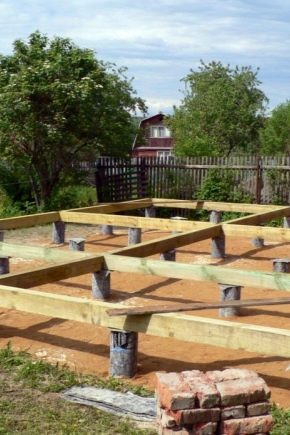
Wooden houses are gaining popularity again these days. This is not surprising, given the availability and environmental friendliness of this material, as well as its technical characteristics. But even such a house needs a foundation. We will tell you which is the best to choose the foundation for a wooden house and how to build it.

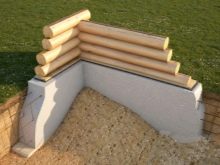

How to choose a base?
Most people understand the foundation as an ordinary concrete platform on which a house stands. In fact, the foundation has a more complex structure and a lot of species. The durability of the building, as well as the safety of people living in it, will depend on the correct selection of the structure.
If the foundation is chosen and built incorrectly, then the house will constantly be damp and mold will appear on the walls quite quickly, which will cause the smell of rot to appear.
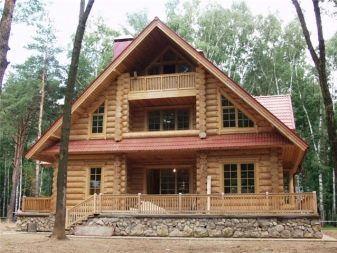

In order to choose a base, the following factors should be taken into account:
- A placewhere the building will be built. After the construction site has been selected, it is necessary to carry out exploratory drilling. This is necessary in order to accurately determine the composition and characteristics of the soil in the place where the support base for a wooden house will be installed. It is very undesirable to carry out the installation of such buildings near ravines and natural reservoirs - in such places the soils are extremely unstable. It is also necessary to take into account the need and possibility of laying electrical networks, sewerage and water pipes.
- Dimensions (edit) the buildings. The size of the house will greatly affect the load on the foundation. Moreover, not only the height of the building will matter, but also the number of floors. The perimeter of the house, on the other hand, is not so important due to the fact that increasing the perimeter increases the supporting surface in direct proportion.
- Another important factor is absence or presence of a basement or basement.


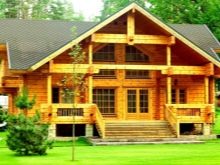
- Relief surface in the place where the house will be installed. In the case of the same strip foundation, very serious and expensive preparatory work will have to be carried out if the construction is carried out on a slope.
- Ground base properties Location on. The quality and composition of the soil is easy to determine by how the water will go after the previous rain. If the soil contains a high percentage of clay, then it will slowly let water through, and if the water comes to the surface, then the earth begins to be covered with a crust with a high density. If sand predominates in the soil, then it will let water through very quickly. Loams let water through even faster, but they dry out extremely slowly. If peat predominates in the composition of the soil, then it will dry for a long time and plants will grow poorly on it.
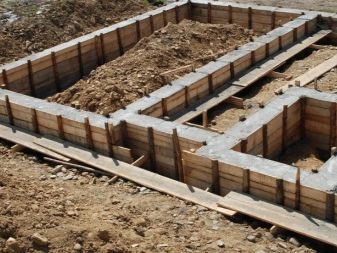

The depth of the groundwater level, as well as the point of freezing of the earth, will be of great importance.
All this suggests that each type of soil will have a different bearing capacity and density. And on some, the house will stand on the foundation well and firmly, while on others the foundation may begin to slide, which will lead to its destruction and deformation of the building.
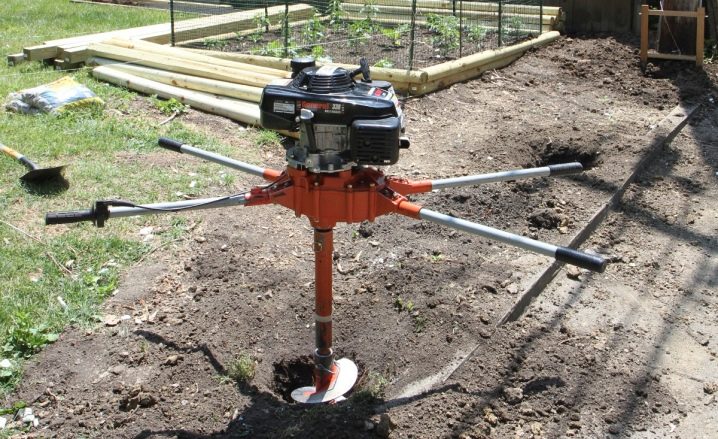
What concrete is needed?
Choosing the right place to build and the type of foundation is only half the battle. The foundation must be made of high quality concretea that will be really durable and will perfectly resist physical and natural influences.
- Concrete category M100 will be an excellent option in the initial stages of construction. For example, when it comes to pouring a foundation. A foundation made of this type of concrete is suitable for the construction of fences, small wooden houses, small garages, as well as some agricultural buildings.
- If we talk about the brand of concrete M150, then it will be a good solution for a belt-type foundation of small size and weight, as well as preparatory concrete work. From such concrete, you can build a foundation for a small house on one floor, made of cinder block, gas or foam concrete. Also, such a foundation can be used for agricultural buildings and garages.
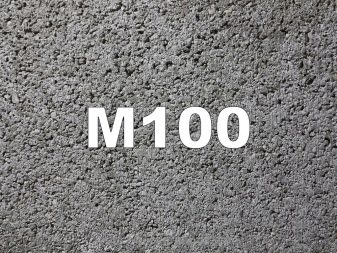
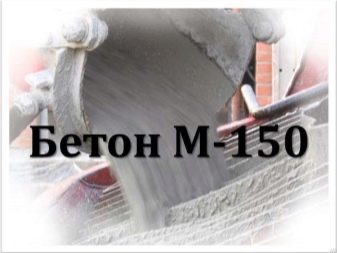
- Concrete grade M200 it is used quite often in the construction of residential buildings on one and two floors, where the floors are of a light type. The concrete grade under consideration is structural in terms of its strength characteristics and is used in the production of reinforced concrete products.
- If we talk about the categories of concrete M250 and M300, then these options will be an excellent solution for foundations that are planned to be done for large residential private houses. The M300 can generally be used to fill a foundation that can easily withstand the mass of a five-story building. M300 is considered to be the most durable type of concrete that can be used to create monolithic slabs.
- There is also a brand of concrete M400, but it is used exclusively for the construction of multi-storey buildings, the height of which is limited to 20 floors.

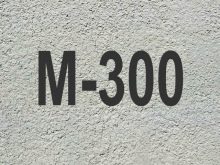

So if you need to carry out the construction of a wooden house, then the M200 and M300 brands will be enough. The projects usually indicate the required grade of concrete for the foundation and other technical characteristics of the required solution.
Usually the most important metrics for concrete are:
- waterproofness;
- resistance to low temperatures;
- mobility.
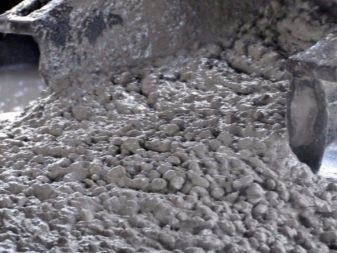

Optimal view calculation
Now you should tell what types of support bases exist in order to calculate which foundation will be better for this or that case.
There are four main types of foundations in total:
- pile;
- slab;
- columnar;
- tape;
- floating.
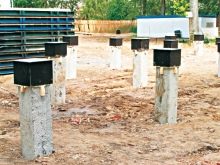

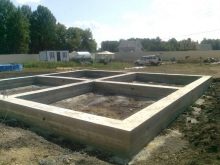
If we talk about pile foundations, then for a wooden house, where there will be no basement or basement floor, the pile structure will be the most suitable option for arranging the foundation. Here, the marking order and the option for placing the piles will be the same as in the case of a columnar foundation.
It should be noted that a pile foundation will be the best solution if the soil is weak and there is a serious slope on the site. Also, an important factor in which it is best to choose this type of foundation will be the presence of groundwater near the support base.

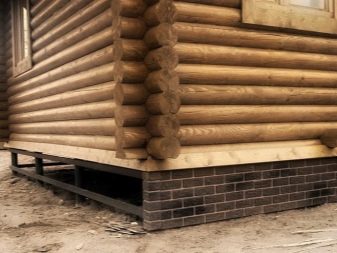
Tape options are considered the most popular for the construction of foundations, as they are very easy to create, do not require special knowledge and are excellent for places where the soils are stable and have at least average strength.

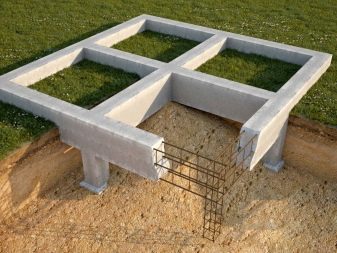
Slab foundations will be in demand where soils are extremely unreliable, have high mobility and are generally considered unsuitable for construction. They represent one large monolithic slab. This type of support base can save the house from subsidence when the ground moves.
Floating foundations are suitable for places where the construction site is located in swampy or heaving-unsteady terrain. In such places, only this type of foundation can be used in order to somehow cover all the existing shortcomings. After all, these types of soil are completely unsuitable for construction.And the floating foundation will be here very well, by the way, since it moves on soft soils. Any other type of concrete base in this situation will simply crack.
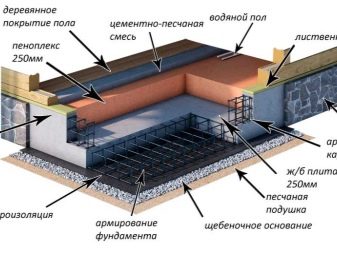

Options: device and construction
The belt type of the base is made according to the following technology.
- First, you need to markup using a cord and pegs. Moreover, it is done so that the corner of the tape is in the place where the stretched cords intersect. When this is done, remove the plants from the work area, followed by the soil.
- Now, in accordance with the markings, it is necessary to dig trenches to the depth indicated in the project, taking into account the indicator of the soil freezing point. The width of such trenches should exceed the dimensions of the foundation by half a meter so that it is convenient to work.
- Now it is necessary to pour a special drainage layer on the bottom. This can be easily done using medium-grain crushed stone and sand.
- Now you need to spill everything with water and tamp it. Such a layer should protect the base from the influence of any ground movements.
- The next stage is the installation of the formwork. It must be made of dense material so that it can be used again if necessary. For example, if the roof is made of metal, then a planed board can be used for formwork. Once removed, the boards can be used for lathing. If the roof will be made of shingles, then plywood can be used. And in order to protect it from the effects of concrete, before reinforcing the walls of the formwork, you can cover it with a polyethylene film.
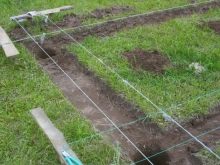
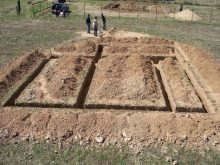

- Reinforcement is carried out with steel rods, the diameter of which is 7 millimeters. In this case, the grid can have either 4 or 6 rods. But here everything will depend on the dimensions of the foundation. The greatest distance that can be between the rods is 40 centimeters.
The strip foundation will be completely ready in 28 days. If the weather is hot outside, then it is better to cover it with foil and water it from time to time. If the concrete dries too quickly, it may crack. After this period, the base will be ready for use.
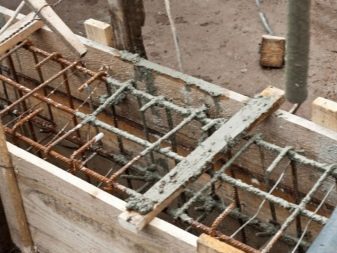

The manufacture of a columnar type of foundation involves the following steps:
- First you need to prepare the site. This is done simply - you need to remove all plants and the soil layer.
- We mark the foundation. This can be done with the help of pegs, which must be placed in the places where the poles will be mounted. The distance between their axes should not be more than two meters. They must be installed at each intersection or abutment of the base along the perimeter of the marking, as well as under the internal partitions.
- We drill wells for pillars. The depth of the pillar should be more than the level of freezing of the ground at the site of the foundation by about forty centimeters.
- A cushion of gravel and sand is made at the bottom of the pit. First, we fill in a sand layer about 15 centimeters thick, after which we pour in medium-gravel gravel and tamp both layers. For reliability, you can spill all this with water.
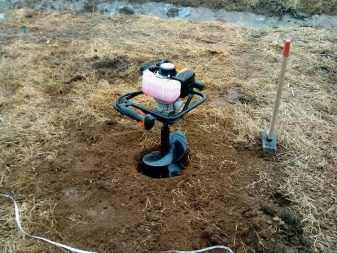

- Now we make reinforcement using steel reinforcement with a diameter of six to eight millimeters. The frame of this mesh is cooked on the surface and then lowered vertically into the pit. Both 4-bar and 6-bar reinforcement methods can be used. But here everything will depend on the size of the pillar.
- Now we mount the formwork of the required height. For a house made of wood, the protrusion of the pillars above the ground should be no more than half a meter. All upper cuts of the formwork must be placed clearly horizontally and at the same height along an elongated cord. The pillar heads can be made with brickwork.
- When the pillars are ready, the supporting base of the house is placed on them - the grillage.


The main component of the pile structure will be metal screw piles. They are inserted into the ground so that the upper ends can be aligned along the stretched cord. The grillage is being installed on the pillars. It is usually made from the following materials:
- timber;
- metal profile - channel or beam;
- cast concrete grillage.
The advantages of such structures will be the absence of the need to carry out earthworks and quick installation of the foundation. If we talk about the shortcomings, then it is impossible to make a basement in them.
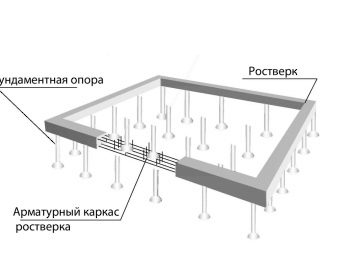

Slab bases are made using the following technology:
- marking of the site is carried out with the removal of plants and a layer of soil;
- compaction of the soil using a vibrating plate, which will allow the depth to settle to a level of up to 50 centimeters;
- now the bottom of the pit must be tamped;
- a geotextile is placed on the bottom, and in such a way that there is an overlap on the walls;
- we mount a drainage layer of gravel and sand, level it and tamp it;
- now we make drainage bedding and carry out the installation of the formwork;
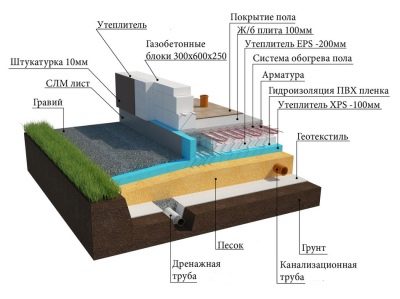
- we lay an insulating layer of foamed polystyrene plates, wrap everything in geotextile;
- now waterproofing is done using bitumen mastic, but before that it is necessary to treat the surface with a primer in accordance with the recommendations on a pack with bitumen resin;
- carry out the installation of a reinforcing mesh made of steel bars with a diameter of 8 millimeters, the distance between them should not exceed 40 centimeters, and the thickness of the slab should also be at the level of 40 centimeters;
- now we fill with concrete. It must be done continuously in one go. It is best to use the services of a concrete pump and concrete workers, and then it will be necessary to use vibrators for concrete.
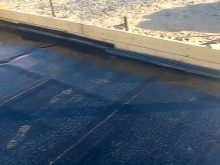
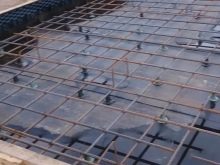

You can make a floating foundation using the following algorithm:
- first, a trench is dug around the perimeter of the proposed building;
- now a cushion of 20 cm thick crushed stone is placed on the bottom of the dug trench;
- slightly moistened sand is placed on top of it, which must be well tamped;
- within two to three days, it is necessary to water this sand, and then ram it with a special shield;
- we mount the formwork and lay the reinforcement;
- pouring concrete into the formwork - only high-quality concrete should be poured - the same as in the construction of a conventional foundation;
- cover the base made with polyethylene film and leave it for one week.
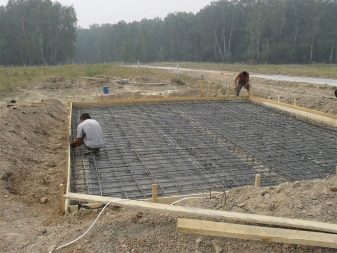
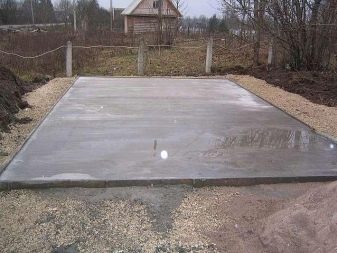
Making any of the above foundations is pretty simple.
Waterproofing and laying the first crown
The next step will be to create horizontal waterproofing. For its formation, a mastic based on bitumen and roofing material is used. First, you need to level the work surface, then apply an even layer of mastic, which should then be covered with roofing material. If necessary, then the edges of the material just need to be trimmed.
Thanks to this procedure, you can protect the walls of the house from moisture that will come from the soil. In addition, if the building shrinks, the walls, thanks to the waterproofing layer, will not crack.
If we talk about the waterproofing materials themselves, then you can use whatever you like - both injection and roll.
If the construction is going from scratch, you can first treat the horizontal surface with "Penetron", which will create a waterproofing barrier.
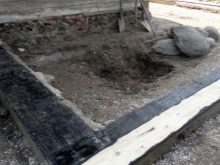


On top of the waterproofing layer, brickwork with a height of 5 rows of bricks is installed. From the outside, such masonry is made continuous and holes are left for ventilation. On the inside, recesses are made in the necessary places for the logs of the subfloor. It should be remembered that the logs should be at the same distance from each other. The distance should not be less than 60 centimeters.
Now you should install the lags. For this, the ends of the already prepared bars are first covered with an antiseptic, after which they are wrapped in roofing material. But the ends of the lag should be left open. The logs are laid on the foundation so that their ends are in the recesses made in the brickwork. The slots are filled with polyurethane foam.
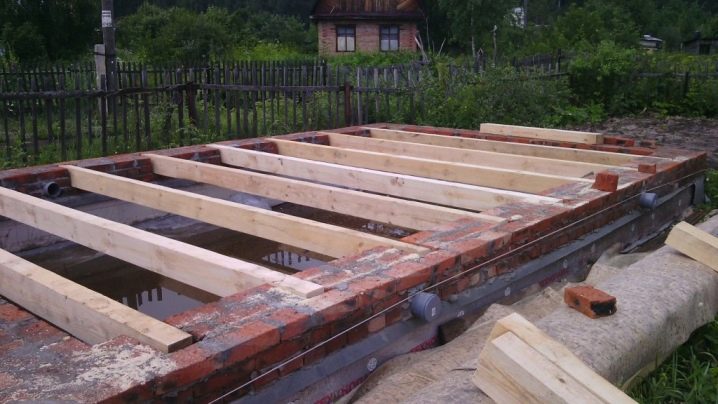
The lower crown of a house made of wood deteriorates the fastest. It is for this reason that the structure should be as suitable as possible for repair. In order for the installation of a bar to be made on a concrete plane, there are two technologies:
- In the first case, a rod is inserted into the monolith of the grillage, tape or slab at the stage of concreting. When the first beam is installed, holes are drilled in it and it is put on the protruding pins.
- The second way is a hairpin. Its essence is that when pouring the hairpin is walled into the foundation. Its height should provide a through passage through the bar and the placement of a nut with a wide washer on top of it. After tightening, the remaining end is cut with a grinder.

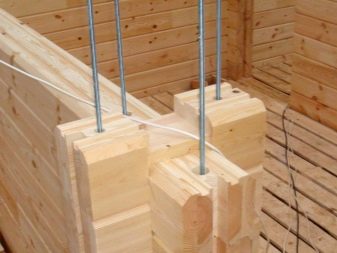
Fastening to the pillars is done using threaded rods or dowels, and they can be fastened to screw piles with self-tapping screws or additional plates can be attached.
The strapping is a necessary element of the log house. It represents the lower crown of the house, serving to strengthen the base, into which there is no point in sawing floor logs. But walls made of wood, even if they are glued beams, are difficult to attach to the foundation. To perform such a task, a bar of greater thickness is taken as the first crown. First you need to have fasteners on hand. It is necessary to check the evenness of the foundation surface. If necessary, the unevenness must be removed. Now the lumber crown must be put on the roofing material and made a hitch in the paw.
We drill holes in the bars that we will put on the bottom row. They will be larger than the diameter of the anchor rods that were previously supplied and concreted at the top of the foundation. After that, the drilled beams should be placed on the anchors. Now they put wide washers under them, which are fastened with nuts. We determine exactly the location of the corners using a level. After that, you can mount the vertical guides for the construction of the frame.
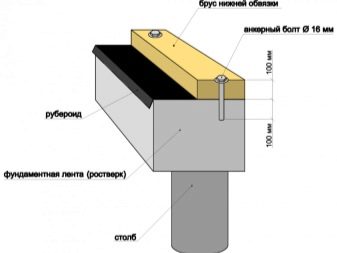
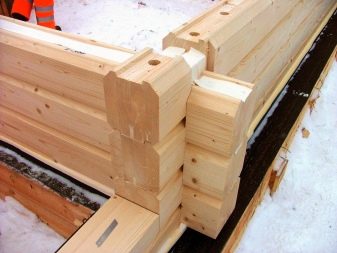
Old building: features of the foundation
Wooden houses are still the main buildings in many settlements today. Old buildings were made using cheap materials, and therefore today their owners have to think about how to lay the foundation for a ready-made relatively new or old house.
Causes of destruction
If we talk about the reasons for the destruction of the foundation of such houses, then there are several of them:
- the type of soil was incorrectly determined and the wrong type of foundation was installed;
- unsuitable materials were used during construction;
- the impact of natural and anthropogenic factors;
- the wooden house was rebuilt and rooms were added.
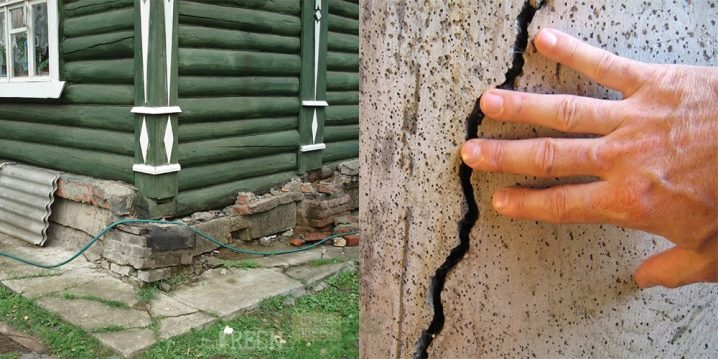
Of course, this is not a complete list, but it gives an idea of the reasons that may lead to the need to build a new foundation or add concrete in order to avoid the destruction of the old one.
Condition analysis
In order to change the base or repair it, it is necessary to analyze its condition. For this you need:
- dig a ditch half a meter wide;
- identify the base material and see any problems.
And then you can already make a decision.
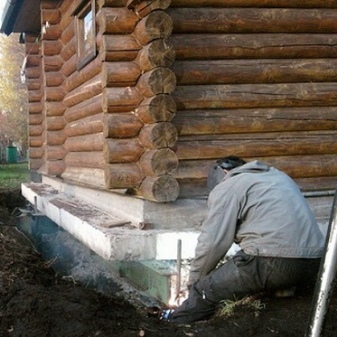
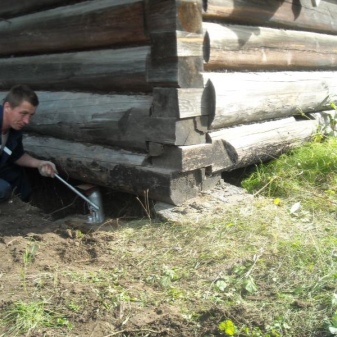
Repair or replacement: stages
Step-by-step instructions that will allow you to change the foundation:
- dismantling the corners of the foundation and preparing the ground;
- creation of a reinforcing frame, which will improve the bearing capacity of the structure;
- installation of formwork;
- pouring concrete;
- waiting for the concrete to harden and the design strength of the corners is reached;
- replacement of the rest of the sites.
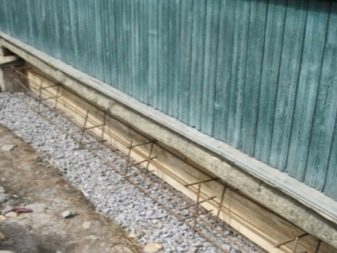
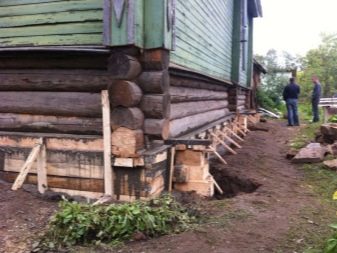
For complete replacement, the foundation is divided into 2 meter segments. Dismantling the sections is done one by one to ensure stability.
If it is necessary to carry out repairs, then here is the procedure:
- digging a trench around the base;
- we drive parts of the reinforcement into the old base so as not to destroy its remnants;
- remove problem areas of the foundation;
- we fill the trench with a lean mixture of concrete, but we do this gradually so that the solution can get into the ground and the old foundation.

Specialist advice
- Be sure to carry out preparatory work and carefully determine the type of soil on the site where construction will be done. Choose the right type of soil for your home to avoid future problems. Also, you should not neglect the use of good concrete, since in the future, savings in this matter will spill over to you.
- You should also clearly know at the design stage what kind of house you need and what it should be. Otherwise, if after pouring the foundation you want to change something, such a structure is unlikely to last long.
- Another point that should be said - in no case violate the foundation construction technologies. Everything that needs to be done should be done exactly according to the instructions. Otherwise, there is not only a risk of deformation of the house, but also a risk to the lives of its residents.
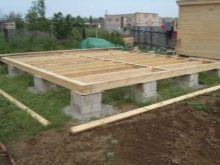

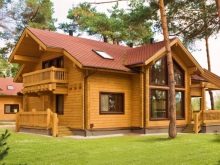
For information on how to install the pile-strip foundation for a wooden house, see the next video.













The comment was sent successfully.